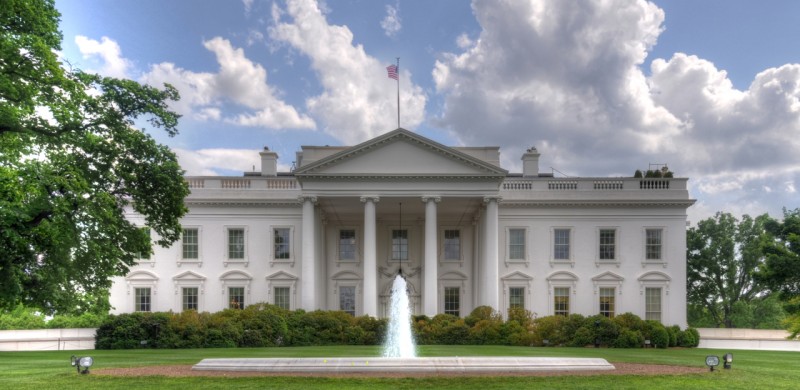
Dec 4, 2015 | Blog, Komorn Law Blog, Legalization, News
According to the latest Gallup poll, 58% of Americans think marijuana should be legal. Surveys conducted in March and October found that most Ohioans agree. So why did Ohio voters overwhelmingly reject Issue 3, which would have legalized marijuana for medical and recreational use, in yesterday’s election? Two reasons spring to mind.
Ohio voters do not like crony capitalism.
The campaign against Issue 3, dubbed Ohioans Against Marijuana Monopolies, focused on the initiative’s most controversial feature: a cannabis cultivation cartel that would have limited commercial production to 10 sites controlled by the initiative’s financial backers. As I explained here last week, that aspect of the initiative caused consternation even among people who otherwise support marijuana legalization. Two leading drug policy reform groups, the Drug Policy Alliance (DPA) and the Marijuana Policy Project (MPP), were conspicuously neutral on Issue 3. The National Organization for the Reform of Marijuana Laws (NORML) issued a decidedly ambivalent endorsement under the headline “Investor-Driven Legalization: A Bitter Pill to Swallow.” The Republican Liberty Caucus of Ohio and the Libertarian Party of Ohio were opposed.
If your marijuana legalization initiative turns libertarians against marijuana legalization, you probably have done something wrong. As DPA Executive Director Ethan Nadelmann noted last week, “a constitutionally mandated oligopoly for an agricultural product…seems un-American” and “sticks in the craws of both liberals and conservatives.” The ballot description highlighted this aspect of Issue 3, saying the initiative “grants a monopoly for the commercial production and sale of marijuana for recreational and medicinal purposes” and would “endow exclusive rights for commercial marijuana growth, cultivation, and extraction to self-designated landowners who own ten predetermined parcels of land.”
Worse, Issue 3 appeared on the ballot right after Issue 2, a measure that was designed to block marijuana legalization by prohibiting the use of initiatives to insert economic privileges into the state constitution. Issue 2 was described as an “anti-monopoly amendment” that “protects the initiative process from being used for personal economic benefit.” It received support from 52% of voters. A Kent State University survey commissioned by WKYC, the NBC station in Cleveland, found that Issue 2 was popular even among supporters of legalization.
The Atlantic’s David Graham rightly highlights voters’ “concerns about monopoly control” but wrongly conflates those concerns with opposition to “Big Marijuana,” the favorite bogeyman of the anti-pot group Project SAM. While anti-corporate attitudes may help explain some progressives’ opposition to Issue 3, conservatives and libertarians who oppose prohibition but nevertheless had qualms about the initiative were not troubled by the prospect that businesses would make a lot of money by producing and selling marijuana products. They were troubled by the prospect that the market would be rigged. Opposition to Issue 3’s crony capitalism should not be confused with opposition to cannabis capitalism.
Ohio State law professor Douglas Berman sees a silver lining for antiprohibitionists in the successful campaign against Issue 3. “That reinforces my sense that actually it’s very hard to defend prohibition on the merits, but it’s much easier to attack any particular plan to get away from prohibition,” Berman told Graham. “To me, the reform community has to be ecstatic to see that even in a purple state like Ohio, the advocacy against reform wasn’t, ‘Marijuana is this evil weed.’ It was, ‘Don’t trust those monopolists to legalize weed.’”
Voters who participate in off-year elections are not very keen on legalization.
The Kent State survey, which was conducted in the first week of October with a sample of 500 registered voters, put support for Issue 3 at 56%. But the pollsters warned that the result could be misleading, since people who cast ballots in years when voters are not electing a president “tend to be older and more Republican than the eligible electorate.” That’s relevant to the fate of Issue 3 because Republicans and older voters tend to oppose legalization. In the Kent State survey, only 45% of Republicans, 46% of 61-to-70-year-olds, and 29% of respondents older than 70 favored Issue 3.
A Bowling Green State University (BGSU) poll conducted in mid-October reinforces the point that off-year elections are not favorable to marijuana legalization. Unlike the Kent State survey, the BGSU poll focused on “likely” voters, and it found less support for Issue 3: 44%, with 43% opposed and 13% undecided. In the end, Issue 3 got just 36% of the vote.
Disappointments like that one convinced Rob Kampia, MPP’s executive director, that legalizers should focus their efforts on presidential election years. His group is backing legalization measures in five states next year: Arizona, California, Maine, Massachusetts, and Nevada. “When voters in Nevada or Massachusetts get to the ballot box one year from now, they are not going to be thinking about what happened in Ohio a year earlier,” says Mason Tvert, MPP’s communications director. “They are going to be thinking about the problems marijuana prohibition has caused their states for so many years and the benefits of replacing it with a more sensible system. These initiatives will also benefit from heightened voter turnout during a presidential election year. The more voters that turn out, the more support we tend to see for marijuana policy reform.”
While that’s exactly what you would expect a legalization activist to say, that does not mean it isn’t true. Voters have endorsed legalization in four states and the District of Columbia so far, and given trends in public opinion—in particular, the association between prohibitionism and old age—there is no reason to think that will be the end of it.
Although his side won yesterday, Project SAM’s Kevin Sabet is the one who seems to be whistling past the graveyard. “We’ve proven that legalization, even by popular initiative, can be stopped,” he says, “and we intend to build on this momentum.” The fact that anti-pot activists are crowing about winning one out of six battles over legalization—a situation that would have seemed fanciful just a few years ago—tells you all you need to know about the future of marijuana prohibition in America.
Nov 4, 2015 Jacob Sullum – Contributor
See Original Article Here

Sep 26, 2015 | Legalization, Medical Marijuana, News
July 01, 2015
A series of papers in the Journal of the American Medical Association is starting to correct the shameful legacy of drug war politics over cannabis science. But a research catch-22 persists.
The nation’s top medical organization released a major series of papers on medical cannabis last week in the Journal of the American Medical Association, in a move that constitutes a small step for the AMA, but a giant leap in cannabis medical history.
In five key papers, teams of researchers systematically reviewed dozens of clinical studies of marijuana, speaking in clear language that the “use of marijuana for chronic pain, neuropathic pain, and spasticity due to multiple sclerosis is supported by high-quality evidence.”
The review validated what doctors and patients in California have risked their freedom to say for twenty years. The findings also directly refute critics who maintain that “marijuana is not medicine.”
“They concluded cannabis is useful,” said Dr. Frank Lucido, a Berkeley physician who specializes in cannabis. “I don’t think a single study didn’t show benefit. … I think it was very positive.”
“What’s driving this is a tremendous cultural shift that’s preceding the political shift,” said Martin Lee, of author Smoke Signals. The AMA is acknowledging “what’s been known for 5,000 years.”
The AMA actually opposed federal cannabis prohibition in 1937. After losing that round, most doctors have toed the Drug War line ever since. “It’s great that they have finally acknowledged there’s some medicinal value in cannabis, but the whole thing is so pathetic,” Lee said.
Most major news media outlets, however, have spun the JAMA papers negatively, embracing the narrative that many uses for medical pot are still based on poor science. News reports noted that of one of the JAMA studies found that “there was low-quality evidence suggesting that cannabinoids were associated with improvements in nausea and vomiting due to chemotherapy, weight gain in HIV infection, sleep disorders, and Tourette syndrome.”
News outlets also pointed to another review that found that “there is some evidence to support the use of marijuana for nausea and vomiting related to chemotherapy, specific pain syndromes, and spasticity from multiple sclerosis. However, for most other indications that qualify by state law for use of medical marijuana, such as hepatitis C, Crohn disease, Parkinson disease, or Tourette syndrome, the evidence supporting its use is of poor quality.”
Cannabis experts say the problem with some of the conclusions in the JAMA studies, and the reporting about them, is that they fail to own up to the main reason why study quality has often been poor: the systematic blockade on pot research. For decades, the federal government has refused to authorize research on the medical benefits of cannabis. As a result, the inconclusiveness of some of the research is more a reflection of the federal ban than of the medical effectiveness of pot. “You know how incredibly hard it is to do research that is intended to confirm benefits of cannabis?” said Warner. “It’s impossible. We still have a huge catch-22.”
Experts also say that the decision by AMA researchers to ignore the research blockade shows their bias. “It’s a national embarrassment. The federal designation that cannabis has no medical value is like saying the moon is made of green cheese,” Lee said. “It seems the AMA can’t say, ‘No, the moon is not made of green cheese.'”
The AMA researchers also fail to acknowledge the real world benefits reported by patients. For example, about one in twenty California adults (1.4 million) have used medical cannabis for a “serious” condition and 92 percent of them have reported that it worked. “We have plenty of evidence that it helps for a lot of things,” Lucido said. “We should always do more research. But we shouldn’t stop people from using it in the meantime.”
The AMA researchers also listed the side effects of cannabis without providing context. “Adverse Effects included dizziness, dry mouth, nausea, fatigue, somnolence, euphoria, vomiting, disorientation, and hallucination,” one of the reports concluded.
But the AMA researchers didn’t compare the adverse side effects of cannabis to those of competing analgesics and anti-inflammatories. Painkiller overdoses are America’s leading epidemic. Ibuprofen, for example, regularly causes kidney failure. But those facts were not mentioned in the JAMA studies. “A full third of the Physician’s Desk Reference is adverse effects, including death,” Lucido said. “Cannabis has about ten adverse effects, at least two of which are often desired.”
The AMA researchers’ statements about cannabis addiction also lacked context. “I imagine sleeping pills probably have a much bigger dependency ratio,” Lucido said.
Still, as half-hearted and equivocal as the JAMA papers were, they contributed to a rising tide of mainstream validation for cannabis that’s washing away its prohibition.
“Culturally, the fight is over. We won,” Lee said. “The pro-cannabis side has conquered the culture. Now politics is catching up.”

Jun 16, 2015 | Criminal Defense Attorney Michael Komorn, Legalization, Medical Marijuana, Medical Marijuana Attorney Michael Komorn, News
The Colorado Supreme Court ruled Monday Jun 15, 2015, that Employers’ zero-tolerance drug policies trump Colorado’s medical marijuana laws.
In a 6-0 decision, the Colorado Supreme Court affirmed lower court rulings that businesses can fire employees for the use of medical marijuana even if it’s off-duty.
Colorado became the first state to provide guidance on a gray area of the law. With the ruling, which was a blow to some medical marijuana patients and a sigh of relief to employers.
The decision came nine months after the state’s highest court heard oral arguments in Brandon Coats’ case against Dish Network.
Coats was rendered a quadriplegic by a car accident He had a medical marijuana card and consumed pot off-duty to control leg spasms. He was fired in 2010 after failing a random drug test.
Coats, who was a customer service representative for Dish, challenged the Douglas County satellite TV company’s zero-tolerance drug policy, claiming that his use was legal under state law. His firing had been upheld in both trial court and the Colorado Court of Appeals.
When the case went to the state Supreme Court, legal observers said the case could have significant implications for employers across Colorado. They noted that the ruling also could be precedent-setting as Colorado and other states wrangle with adapting laws to a nascent industry that is illegal under federal law.
At the crux of the issue was whether the use of medical marijuana — which is in compliance with Colorado’s Medical Marijuana Amendment — was”lawful” under the state’s Lawful Off-Duty Activities Statute.
That term, the justices said, refers to activities lawful under both state and federal law.
“Therefore, employees who engage in an activity, such as medical marijuana use, that is permitted by state law but unlawful under federal law are not protected by the statute,” Justice Allison H. Eid wrote in the opinion.
Current Colorado law allows employers to set their own policies on drug use.
Coats’ attorney Michael Evans, of Centennial-based The Evans Group, called the decision “devastating.”
He said he does not plan to take the case to the U.S. Supreme Court.
“You need the Colorado Supreme Court to stand up for its own laws,” he said. “The U.S. Supreme Court is not going to do that.”
Read More and See Related Info Here

Nov 26, 2014 | Legalization, News
Medical marijuana has been legalized in 17 states, a recent measure passed in Colorado and Washington will legalize recreational marijuana use.
By Michael Komorn
Recently voters in Colorado and Washington passed measures to legalize recreational marijuana use, moving state law in conflict with federal law.
Seventeen states have already legalized medical marijuana, even federal law has made its position clear that it feels marijuana has no acceptable medical use. But what is the outcome when state and federal laws oppose one another?
Under the Supremacy Clause of Article VI of the US Constitution, the federal courts are able to throw you in jail for possessing a small bag of marijuana, even if the state law permits it. However, first you have to be prosecuted. And in most instances, the feds haven’t pursued prosecution of people who are prescribed marijuana by a doctor.
If you or someone you know is facing charges as a result of Medical Marijuana prescribed to you as a Medical Marijuana patient under the Michigan Medical Marijuana Act, contact Komorn Law and ensure your rights are protected.
Michael Komorn is recognized as a leading expert on the Michigan Medical Marihuana Act. He is the President of the Michigan Medical Marijuana Association (MMMA), a nonprofit patient advocacy group with over 26,000 members, which advocates for medical marijuana patients, and caregiver rights. Michael is also the host of Planet Green Trees Radio, a marijuana reform based show, which is broadcast every Thursday night 8-10 pm EST. Follow Komorn on Twitter.
Read more: http://www.businessweek.com/videos/2012-12-03/will-new-marijuana-laws-go-up-in-smoke#r=lr-fst

Nov 26, 2014 | Legalization
Silicon Valley is filled with tech workers that are regulars at more than 106 medical marijuana clinics.
f you’re experiencing pain and find yourself in the Silicon Valley, be sure to drop by the Palliative Health Center for some Sour Diesel, or Purple Haze. Palliative Health is one of many medical marijuana dispensaries in San Jose, Calif. Inside, you will discover iPads mounted on pedestals so patients can navigate prices and availability of a dozen strains or so. Additionally, the shop offers marijuana-infused sodas, muffins, and chocolates, and monthly classes on cooking with cannabis.
Assistant manager Ernie Arreola, 38, says about 40 percent of Palliative Health’s clients are tech workers. “We’re seeing people from some semiconductors, lots of engineers, lots of programmers,” he says. And why wouldn’t they be, with the area’s biggest employers—Cisco Systems ,Google, Adobe Systems, Apple, EBay —just down the road.
San Jose is the medical marijuana capital of the Bay Area. With more than 106 pot clinics (for are delivery-only)—more than four times the number in Frisco, and twice as many per square mile as Los Angeles, San Jose Major Chuck Reed says there are many more than necessary to meet the medical needs of their population.
Mark Johnson, chief executive officer of Zite, based in Frisco, says marijuana use is “extremely common” among tech workers. Owned by Time Warner, the company produces an application that offers a personalized news stream on smartphones and tablets. “People just don’t care,” says Johnson, who adds that he smokes pot daily. “If you do, you don’t need to hide it; and if you don’t, you accept that there are people around you that do.”
Located a half-mile from Adobe headquarters, MedMar Healing Center offers a marijuana-infused chocolate toffee called Veda Chews that is a fav-favorite to the approximate 15 percent of customers who are tech workers, according to Doug Chloupek, 35, its CEO and co-founder. “It does not give the high or intoxicated feeling that you would typically get from a lot of medical cannabis,” he says. “Those who are coding for 15 hours a day with cramping hands, that is the product that allows them to have mental clarity and still get pain relief.” Veda Chews go for $13 each. MedMar also offers $10 joints with names like Sour Grapes, Skunk, and Super Silver Haze, along with cannabis-infused breath sprays, brownies, and chocolates.
Despite the widespread prevalence and favor with workers, companies still don’t want employees getting high at work. Cisco, for example, forbids use or possession of “illegal drugs while on Cisco-owned or leased property, during working hours, while on company business, or while using company property,” says Robyn Jenkins-Blum, a company spokeswoman. According a company statement, Adobe has a similar policy. With that said, neither company screens potential hires for drug use. “The Silicon Valley data support recent news reports citing some employers who say they are having a hard time finding candidates that can pass the preemployment drug test,” says Barry Sample, director of science and technology for Quest Diagnostics Employer Solutions.
The tech industry employs a mass of intelligent people, and a lot of intelligent people smoked marijuana in college and never lost the habit. “Pot is an extremely functional drug. Coders can code on it, writers can write on it,” he says. “I see good days ahead for pot.”
If you or someone you know is facing charges as a result of Medical Marijuana prescribed to you as a Medical Marijuana patient under the Michigan Medical Marijuana Act, contact Komorn Law and ensure your rights are protected.
Michael Komorn is recognized as a leading expert on the Michigan Medical Marihuana Act. He is the President of the Michigan Medical Marijuana Association (MMMA), a nonprofit patient advocacy group with over 26,000 members, which advocates for medical marijuana patients, and caregiver rights. Michael is also the host of Planet Green Trees Radio, a marijuana reform based show, which is broadcast every Thursday night 8-10 pm EST. Follow Komorn on Twitter.
![Happy 420 Day [Infographic]](data:image/gif;base64,R0lGODlhAQABAAAAACH5BAEKAAEALAAAAAABAAEAAAICTAEAOw==)
Nov 25, 2014 | Legalization
Happy 420! Enjoy weedblog.com’s infographic on the legalization of marijuana.
By Michael Komorn
With another 4/20 recent past, we’ve shared weedblog.com’s infographic on the legalization of marijuana — feel free to stare at it for hours, but get a glass of water. Pass the White Castle, Mary Jane.
As it stands, the federal government classifies marijuana as a Schedule 1 drug, a real pain in the ass for advocates of legalization.
With 4/20 approaching, we’ve published weedblog.com’s infographic on the legalization of pot, and you can stare at it for hours. Pass the Doritos, Mary Jane. (Substances on Schedule 1 are considered to have high potential for abuse and no currently accepted medical use.)
However, opinions vary, with 18 states and D.C. having legalized marijuana for medical use (interesting since Schedule 1 drugs have no accepted medical use? hmmmm). In Maryland, a bill awaits Gov. Martin O’Malley’s signature, and in Illinois, the proposal will head to the state Senate and then to Gov. Pat Quinn for approval.
When asked the question, ““Should the federal government legalize marijuana?” in a Lawyers.com poll: 92% answered “yes, for recreational purposes” (Where is my vacation package to Colorado?) Another 46.3% answered “yes, for medical purposes.” Only 2.5% responded “no.”
Perhaps you didn’t know that around the weed smoking rotation April 20 (4/20) is referred to as “Marijuana Appreciation Day.” In the early 1970s a small group of hippie stoners at San Rafael High School in northern California used to meet at a designated location every day to smoke weed at 4:20 p.m. They did this so regularly that among members of the group (known as “the Waldos”) the expression “420” became a general euphemism for “time to light up.”
If you or someone you know is facing charges as a result of Medical Marijuana prescribed to you as a Medical Marijuana patient under the Michigan Medical Marijuana Act, contact Komorn Law and ensure your rights are protected.

Read more: http://blogs.lawyers.com/2013/04/420-infographic/
Michael Komorn is recognized as a leading expert on the Michigan Medical Marihuana Act. He is the President of the Michigan Medical Marijuana Association (MMMA), a nonprofit patient advocacy group with over 26,000 members, which advocates for medical marijuana patients, and caregiver rights. Michael is also the host of Planet Green Trees Radio, a marijuana reform based show, which is broadcast every Thursday night 8-10 pm EST. Follow Komorn on Twitter.





![Happy 420 Day [Infographic]](https://komornlaw.com/wp-content/uploads/2014/11/420_3001.jpg)
